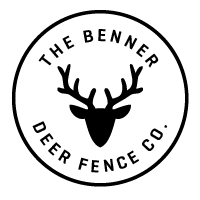Getting Started
The first step is to organize and identify parts, gather tools, plan fence layout and determine order of installation.
1.Identify Parts
Unpack all items and identify parts. Take inventory of items. Please contact us if you need help identifying parts.
NOTE: If you are missing any items, please contact us before you begin your installation.
Visual Guide to Identify Parts
Download our visual guide to help identify hardware + parts
2. Gather Tools
NECESSARY TOOLS
Standard Post Driver
San Angelo digging bar
Long Nose Pliers
9-inch magnetic level
Hog ring gun
Cordless Power Drill (3/8 inch)
11/64” drill bit
Small sledge hammer (3 lbs)
9/16” wrench or deep socket
½” wrench or deep socket
3/8” magnetic driver
RECOMMENDED TOOLS
Dewalt Compound Action Long Nose Pliers
100 or 250 foot measuring tape
¼” drive socket adapter (for power tightening of nuts)
OPTIONAL TOOLS
5/16” drill bit (used to pilot holes for tree fastening)
10 lbs. sledge hammer
Post-hole digger (standard size)
Tool belt (one sided, deep pocket)
Cordless Sawzall tool
6” metal cut off Sawzall blade (medium metal teeth)
3. Plan fence layout
Determine where all ends, corners and gates will be located. Make sure you have enough material for your fence layout.
Post Spacing
Post should be spaced 8 ft. to 14 ft. apart depending on the type of fence and terrain.
Metal Fence + Flat Terrain: 8 ft.—12 ft.
Metal Fence + Hilly Terrain: 8 ft.
Poly Fence + Flat Terrain: 10 ft.—14 ft.
Poly Fence + Hilly Terrain: 10 ft.
Gate Locations
Choose level terrain for gate locations whenever possible.
Corner and End Posts Locations
Corner and end posts require bracing. Brace pipe will be locked into the adjacent line post.
4. Install Fence
Install fence in this order:
STEP 1: End + corner posts + bracing
STEP 2: Gates
STEP 3: Line posts
STEP 4: Cables
STEP 5: Fence

